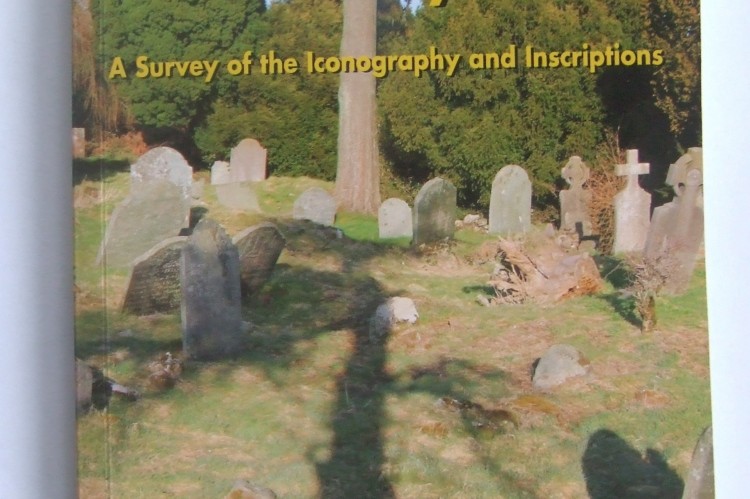 The Historic Graves project has had the pleasure of working with Gerry Mullins on a number of our Graveyard recording workshops. Gerry has recently launched a new book Kilnahue Churchyard Gorey: A survey of the Iconography and Inscriptions. He is an expert on the iconography and symbols used on Irish grave memorials.Graveyards and memorial stones are rich in iconography and symbols whose meanings would have sung out to the people who commissioned and erected the stones. We have partly lost the ability to understand the symbols and what they represent. Consequently we can sometimes find the experience of walking around old graveyards as silent journeys through stories we are no longer able to read or hear. Gerry with his accumulated wealth of knowledge and experience is able to interpret the symbols and recount the stories they represent.
The Historic Graves project has had the pleasure of working with Gerry Mullins on a number of our Graveyard recording workshops. Gerry has recently launched a new book Kilnahue Churchyard Gorey: A survey of the Iconography and Inscriptions. He is an expert on the iconography and symbols used on Irish grave memorials.Graveyards and memorial stones are rich in iconography and symbols whose meanings would have sung out to the people who commissioned and erected the stones. We have partly lost the ability to understand the symbols and what they represent. Consequently we can sometimes find the experience of walking around old graveyards as silent journeys through stories we are no longer able to read or hear. Gerry with his accumulated wealth of knowledge and experience is able to interpret the symbols and recount the stories they represent.
 That morning Gerry presented me with a signed copy of his new book. The book was launched in Gorey Library on the 19th July. It is the end product of an intensive study of the graveyard undertaken by the Gorey Churchyard Heritage Group and led by Gerry. The book has a great introduction which traces the genesis and history of memorial stone inscription and iconography studies in Ireland. Sarah Tarlow’s 1999 book Bereavement and Commemoration: an archaeology of mortality, started Gerry down the road of headstone studies and her descriptions of the memorials as being both ‘deliberately communicative and unintentionally revealing’ is invoked.
That morning Gerry presented me with a signed copy of his new book. The book was launched in Gorey Library on the 19th July. It is the end product of an intensive study of the graveyard undertaken by the Gorey Churchyard Heritage Group and led by Gerry. The book has a great introduction which traces the genesis and history of memorial stone inscription and iconography studies in Ireland. Sarah Tarlow’s 1999 book Bereavement and Commemoration: an archaeology of mortality, started Gerry down the road of headstone studies and her descriptions of the memorials as being both ‘deliberately communicative and unintentionally revealing’ is invoked. The book is dedicated to the Irish headstone cutters of the 18th and 19th centuries. Gerry believes that the Irish headstones display scarce examples of indigenous folk art. The book is a worthy tribute to these artists. I would encourage anyone with an interest in graveyard studies to get a copy. It contains a wealth of knowledge which allows us all to appreciate and read the stories calling out from the symbols and iconography found within every historic graveyard.
The book is dedicated to the Irish headstone cutters of the 18th and 19th centuries. Gerry believes that the Irish headstones display scarce examples of indigenous folk art. The book is a worthy tribute to these artists. I would encourage anyone with an interest in graveyard studies to get a copy. It contains a wealth of knowledge which allows us all to appreciate and read the stories calling out from the symbols and iconography found within every historic graveyard.


